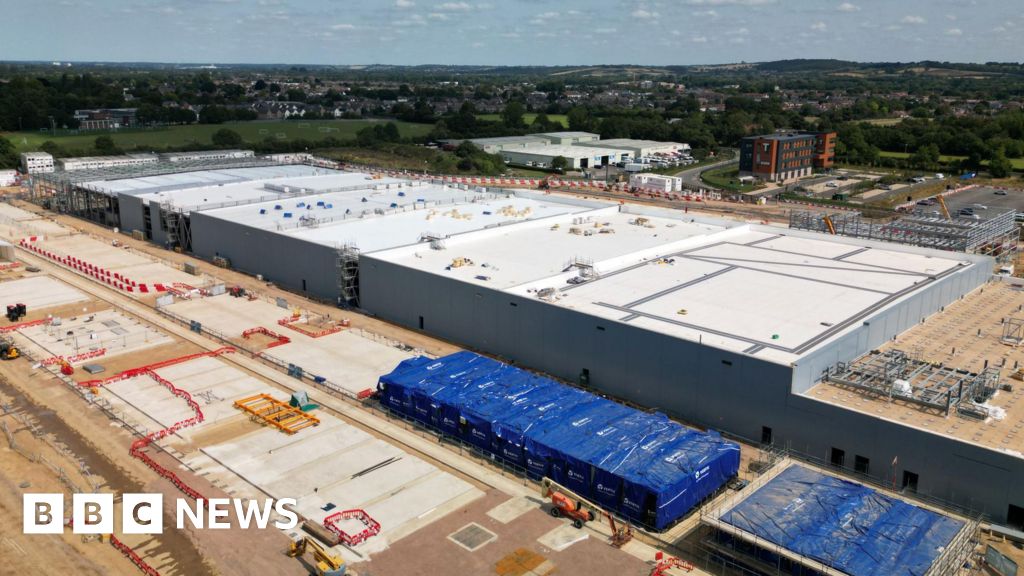Data centres as vital as NHS and power grid, government says

Data centres in the UK are to be classified as critical national infrastructure, joining the emergency services, finance and healthcare systems, and energy and water supplies.
It means they would get extra government support during a major incident, such as a cyber attack, an IT outage or extreme weather, in order to minimise disruption.
Data centres are huge warehouses full of vast banks of computers that remotely power services such as artificial intelligence (AI) applications, data processing and streaming.
Their development has faced criticism over their energy and water use.
But the new Labour government says it backs the sector – with technology secretary Peter Kyle describing data centres as “the engines of modern life”.
There are currently 13 sectors listed as critical national infrastructure in the UK. The list was last updated nine years ago, when space and defence were added.
The previous government launched a consultation in December 2023 to discuss the potential addition of data centres.
A team of officials will now be set up to specifically monitor potential threats against data centres and coordinate a response in the event of a serious incident, such as the recent worldwide chaos sparked by an update from the cybersecurity firm Crowdstrike, which affected millions of people and businesses.
However there will not be any new regulations, nor is additional scrutiny of data centre operators’ existing contingency arrangements planned.
“It’s not surprising that data centres are now to be classed as critical infrastructure as they house so many critical online services,” said Prof Alan Woodward, a cyber security expert from Surrey University.
“Many people think of services as being in an ethereal cloud, but everything is based at some point on physical infrastructure and more often than not this is based in a data centre.”
In 2023 the former deputy Prime Minister Oliver Dowden warned of Russian “attempts to attack British infrastructure”.
Lindy Cameron, the boss of the National Cyber Security Centre, said more needed to be done to protect it from cyber threats.
“Bringing data centres into the Critical National Infrastructure regime will allow better coordination and cooperation with the Government against cyber criminals and unexpected events,” he said.
The need for data centres is growing, in part because of the proliferation of AI-based services, which require considerable computing power.
On Wednesday, Amazon Web Services announced it will invest £8bn building and operating data centres in Britain over the next five years.
Microsoft and Google are separately building their first UK such premises at the moment.
But environmental concerns about data centres and their demand on resources remain – they are energy-hungry and can require large quantities of water for cooling.
The chief executive of the National Grid said in March that data centre power use in the UK would increase six-fold in the next decade.
Plans to build the data centres also often run into local opposition – in June, councillors in Buckinghamshire rejected a proposed development because of its impact on the green belt.
Related
Major military infrastructure upgrade completed at Leuchars
Upgraded facilities have been delivered for The Royal Scots Dragoon Guards and 2nd Battalion Royal Electrical and Mechanical Engineers, including refurbished o
UK public EV charge points surpass 75,000 as infrastructure booms
The UK’s electric vehicle (EV) charging infrastructure has hit a significant milestone, with the number of public charge points surpassing 75,000. According t
Infrastructure firm strengthens UK presence with Brierley Hill warehouse |…
National infrastructure service provider MJ Quinn has secured a newly refurbished industrial site in Brierley Hill as part of its ongoing UK ex
UK: Work Begins on New Railway Station in Okehampton
Initial work has begun to build a new railway station in Okehampton, Devon. The new 15 million GBP station, named Okehampton Interchange, will connect We













